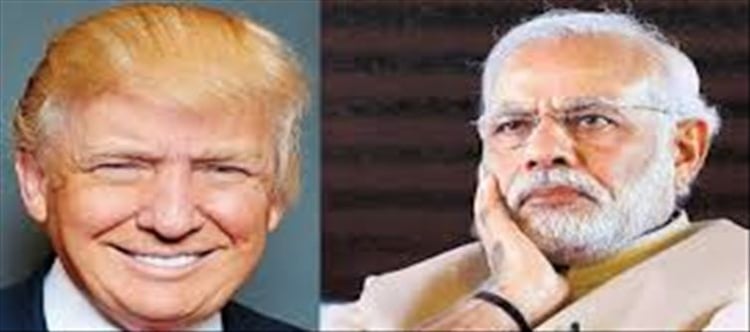
The indian stock market is currently undergoing a stormy phase, with a noticeable drop in both small and mid-cap stocks, seeing cuts ranging from 30-40%. But the real unsettling sign is the start of a 20-30% decline in large-cap stocks, shaking investor confidence. Nifty, which has been hovering on the edge, may not dip below the crucial 18,000 mark, but one thing is clear—individual stocks are witnessing a fall to levels we haven’t seen in decades, possibly even hitting century lows.
And just when you think the market’s troubles are merely coincidental, there’s another curious pattern that many investors have noticed: every time prime minister Narendra Modi heads to the United States, the indian stock market seems to take a dive. While it may seem like a stretch, history has shown us that this alignment isn't just a random occurrence.
The Mystery of Modi’s U.S. Visits and the Market
It’s almost uncanny—the moment Modi sets foot on U.S. soil, the stock market starts to show signs of distress. The sequence has occurred multiple times now, with dramatic market fluctuations that leave investors scratching their heads.
Theories abound, ranging from speculation on foreign investor sentiment to geopolitical tensions influencing market confidence. Some analysts suggest that the timing of these trips often coincides with broader market corrections, while others suspect that the perception of India’s political uncertainty during these visits could trigger nervous reactions among traders. Whether it’s the anticipation of policy changes or the disruption in domestic affairs, the market seems to respond in a way that’s hard to ignore.
A Deeper Look at the Market Decline
Now, why is the market behaving this way? There’s a multitude of factors at play. On the global front, the U.S. is facing its own economic turbulence, and a ripple effect is inevitably felt in emerging markets like India. Closer to home, inflationary pressures, coupled with slowing economic growth, have put additional strain on the markets. corporate earnings are underwhelming, and investor confidence is fragile.
At the same time, India’s economic reforms and infrastructure projects have slowed, casting doubt on the government’s ability to maintain the growth momentum it promised. With the global investment landscape shifting, foreign institutional investors are becoming cautious, and their outflows are contributing to the downward spiral.
The Broader Impact: The ‘Century Low’ Phenomenon
While the Nifty index is expected to hold above the 18,000 mark, the real story lies in the stock-specific carnage. Smaller and mid-sized companies are bearing the brunt of this correction. Many stocks are plummeting to levels we haven’t seen in over a hundred years. Some investors are calling this a "century low" phase, as companies that were once thriving now face near-collapse valuations.
This, in turn, is creating opportunities for bargain hunters who are willing to ride out the storm. However, for those already deep in the market, the situation is a harsh reminder of how unpredictable stock markets can be. It’s a delicate balancing act—holding on for potential recovery or cutting losses to survive the chaos.
Will Modi’s U.S. Visits Continue to Trigger the Dip?
There’s no clear answer as to why this strange correlation between Modi’s U.S. visits and market crashes persists. But one thing’s for sure: the market is a complex beast, and sometimes the smallest triggers—be it geopolitical events or simple investor psychology—can create a domino effect.
In the end, the indian stock market’s current volatility is just another chapter in the never-ending saga of economic highs and lows. The question remains: will we weather the storm, or is this a precursor to even tougher times ahead? Time will tell, but in the meantime, it’s crucial for investors to stay informed, stay prepared, and stay cautious.




 click and follow Indiaherald WhatsApp channel
click and follow Indiaherald WhatsApp channel